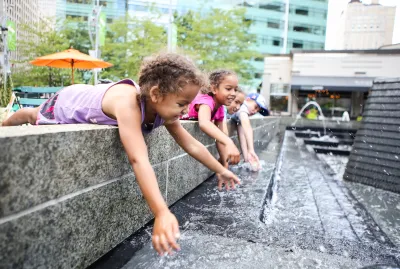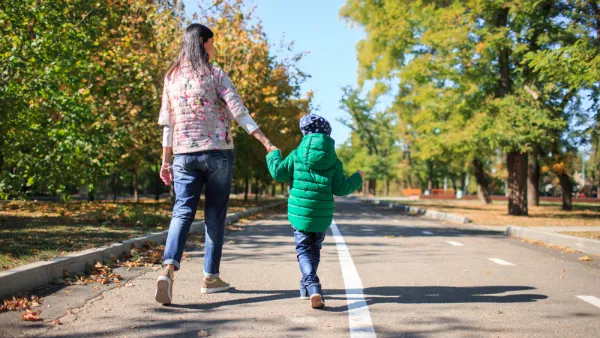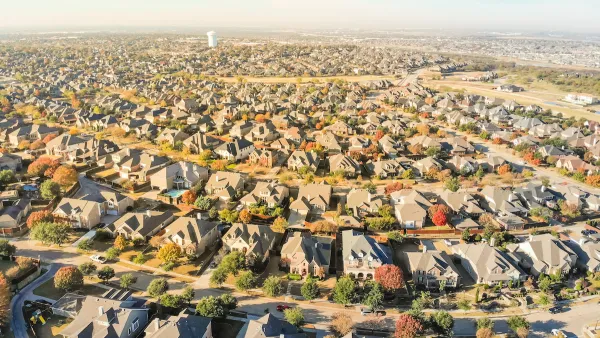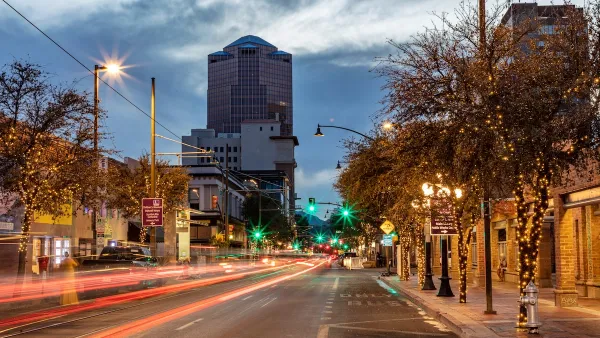For parents of small children, amenities like public restrooms or shady parks can vastly improve—or deteriorate—the experience of navigating cities.

Writing in Streetsblog USA, Barry Greene Jr. outlines five ways that the built environment fails families with young children.
The first problem, Greene writes, is shade. For example: in the warm, humid climate of Greenville, South Carolina, a new city park fails to provide almost any shade. Greene writes that parents and children need shady spots to rest during an outing.
The second issue, for Greene, is public restrooms. Most U.S. cities famously lack a robust network of public bathroom facilities, often turning a walk around a city into an urgent hunt for a bathroom. For parents of toddlers, this is another way their needs are excluded from the public built environment. “Cities are so afraid of our housing insecure that we’ve simply made it inhumane to use the bathroom. Children can’t wait — and sometimes, neither can adults.”
Greene also laments the lack of pedestrianized streets, which create safe spaces for children to run and play, as well as small-scale shops and “micro-retail storefronts” that let parents quickly access daily needs.
Greene’s fifth element of public life that doesn’t cater to parents and children is public transit. “I’ll also include family-friendly ridesharing. Currently, there’s no way to request a rideshare with a child car seat.”
Ultimately, Greene’s advice, aimed at designing cities with children in mind, can make public spaces more safe, pleasant, and accessible to all groups.
FULL STORY: Five Things Missing In The Built Environment For Families With Young Children

National Parks Layoffs Will Cause Communities to Lose Billions
Thousands of essential park workers were laid off this week, just before the busy spring break season.

Retro-silient?: America’s First “Eco-burb,” The Woodlands Turns 50
A master-planned community north of Houston offers lessons on green infrastructure and resilient design, but falls short of its founder’s lofty affordability and walkability goals.

Delivering for America Plan Will Downgrade Mail Service in at Least 49.5 Percent of Zip Codes
Republican and Democrat lawmakers criticize the plan for its disproportionate negative impact on rural communities.

Test News Post 1
This is a summary

Test News Headline 46
Test for the image on the front page.

Balancing Bombs and Butterflies: How the National Guard Protects a Rare Species
The National Guard at Fort Indiantown Gap uses GIS technology and land management strategies to balance military training with conservation efforts, ensuring the survival of the rare eastern regal fritillary butterfly.
Urban Design for Planners 1: Software Tools
This six-course series explores essential urban design concepts using open source software and equips planners with the tools they need to participate fully in the urban design process.
Planning for Universal Design
Learn the tools for implementing Universal Design in planning regulations.
EMC Planning Group, Inc.
Planetizen
Planetizen
Mpact (formerly Rail~Volution)
Great Falls Development Authority, Inc.
HUDs Office of Policy Development and Research
NYU Wagner Graduate School of Public Service





























